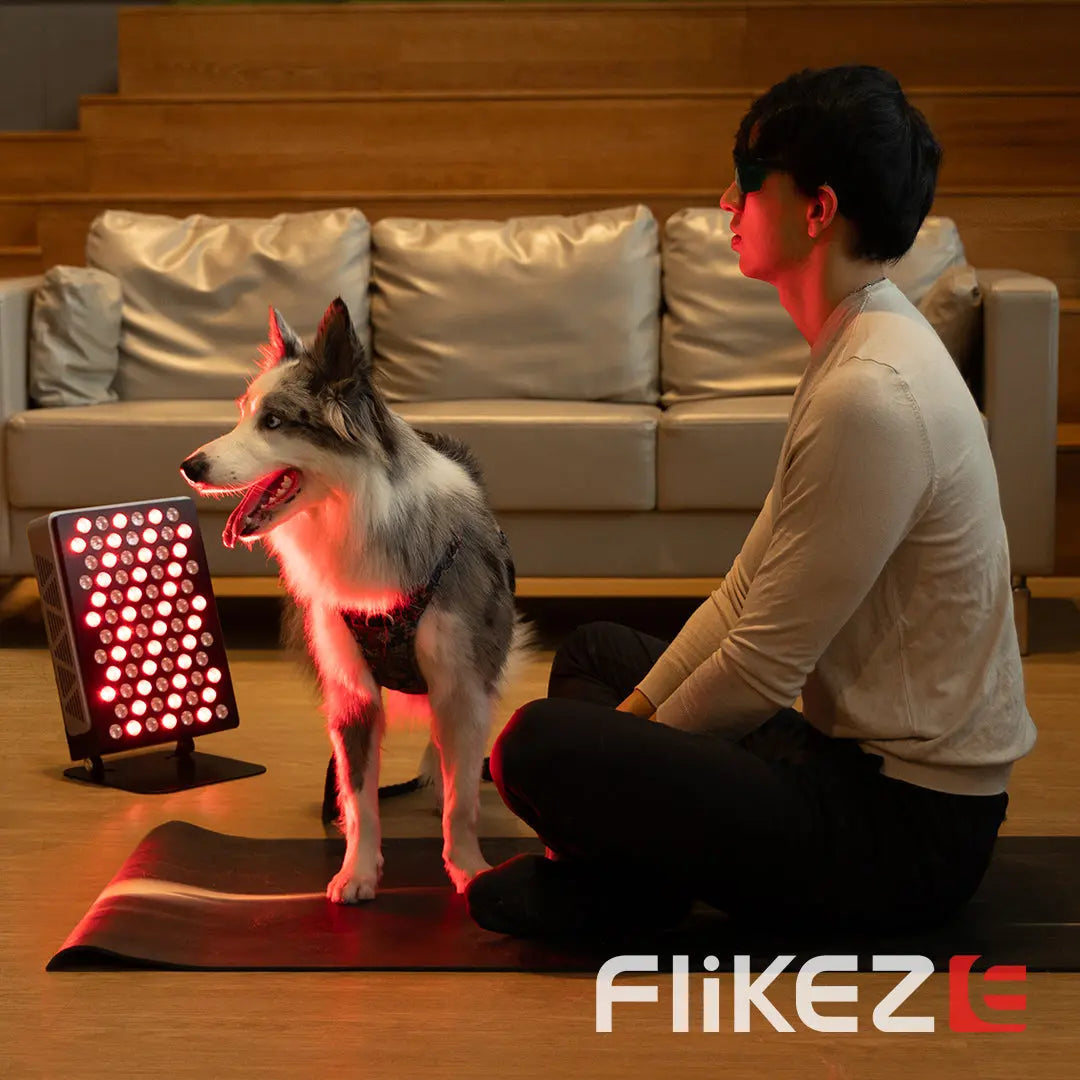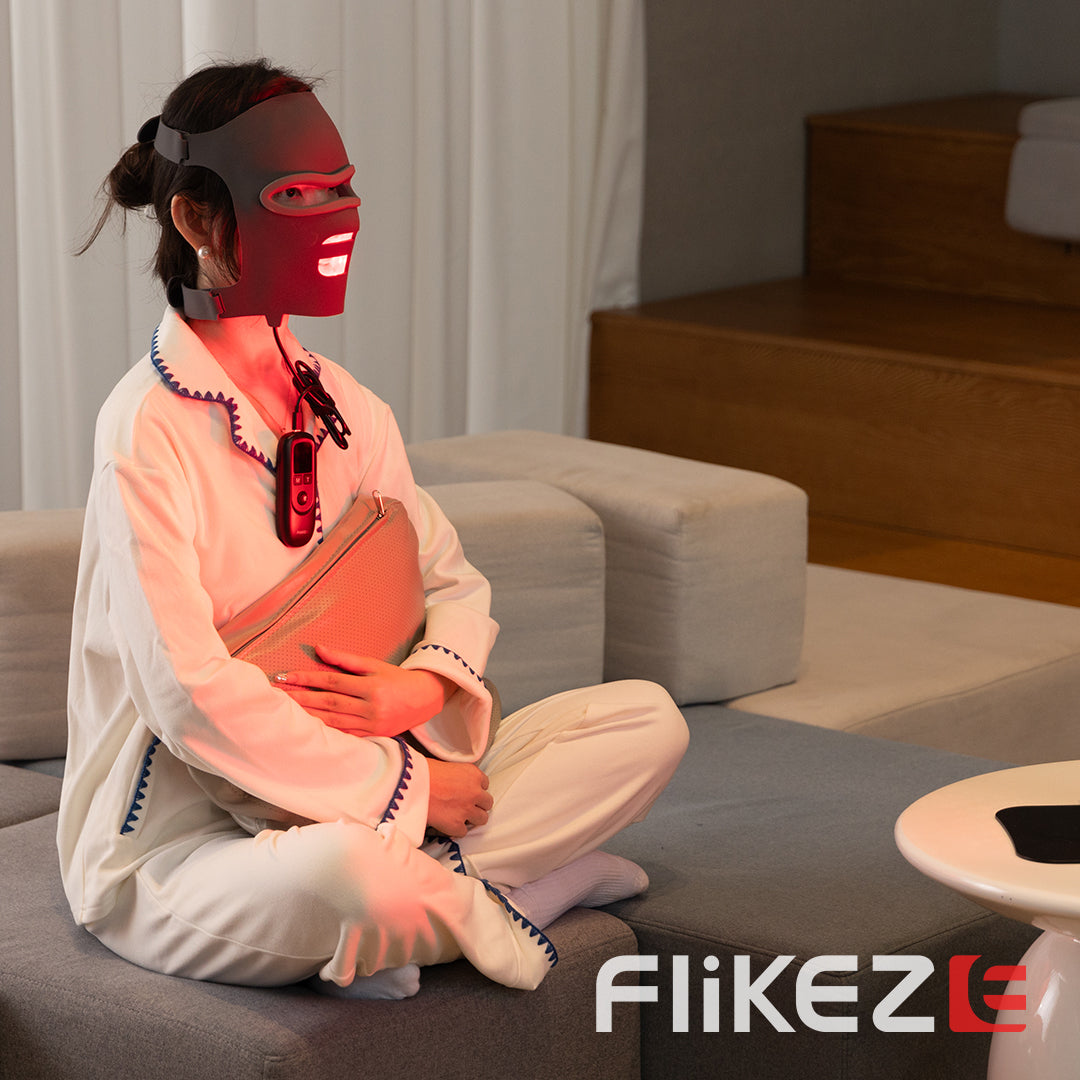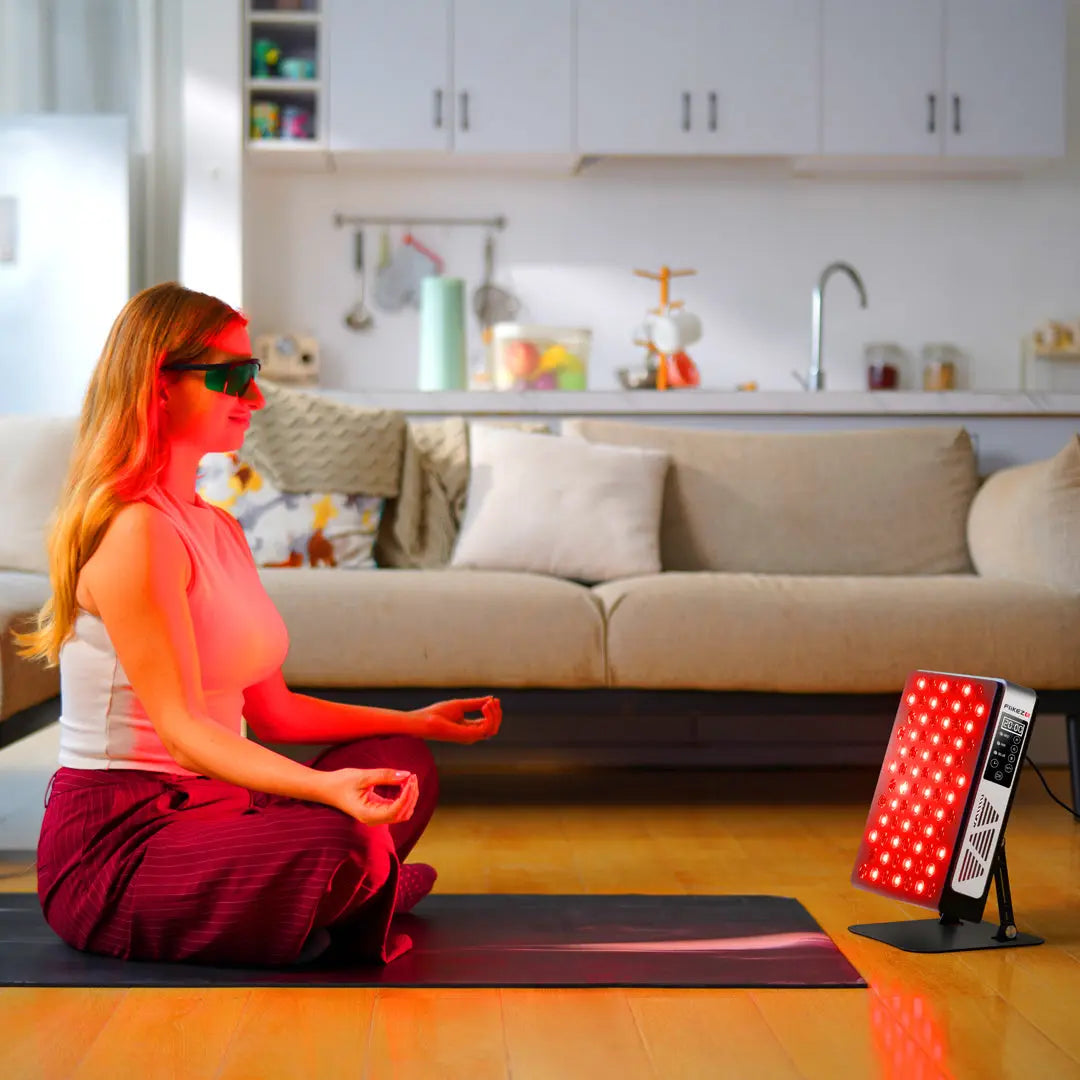Im Bereich der therapeutischen LED-Beleuchtung spielt die Bestrahlungsstärke eine entscheidende Rolle für die Wirksamkeit der Behandlung. Da die Nachfrage nach Geräten wie LED-Panels steigt, ist es unerlässlich, die Feinheiten der Bestrahlungsstärke und ihren Zusammenhang mit den Behandlungsergebnissen zu verstehen. Dieser Blogbeitrag befasst sich mit der Bedeutung der Bestrahlungsstärke, der Frage, ob eine höhere Bestrahlungsstärke zu besseren Ergebnissen führt und dem Einfluss der Wellenlänge auf die Bestrahlungsstärke.
Was ist Bestrahlungsstärke?
Die Bestrahlungsstärke ist ein Maß dafür, wie viel Lichtenergie auf einen bestimmten Bereich abgegeben wird. Sie wird üblicherweise in Milliwatt pro Quadratzentimeter (mW/cm²) angegeben. Im Kontext der LED-Lichttherapie gibt sie die Energiemenge an, die das Zielgewebe erreicht.
Eine höhere Bestrahlungsstärke bedeutet, dass das Gerät mehr Energie abgibt, was die Lichtdurchdringung verbessern und möglicherweise die Wirksamkeit der Behandlung steigern kann. Mehr Energie führt jedoch nicht automatisch zu besseren Ergebnissen. Faktoren wie Behandlungsdauer, Wellenlänge des Lichts und das Gesamtprotokoll spielen eine entscheidende Rolle für optimale Ergebnisse.
Bedeutet eine höhere Bestrahlungsstärke bessere Ergebnisse?
Die kurze Antwort: nicht immer. Eine höhere Strahlungsintensität kann zwar die Energieabgabe beschleunigen, ab einem bestimmten Schwellenwert ist sie jedoch möglicherweise nicht mehr vorteilhaft oder sogar kontraproduktiv.
1. Grenzen der Energieabsorption: Die Haut bzw. das Gewebe hat eine begrenzte Kapazität zur Aufnahme von Lichtenergie. Übermäßige Lichteinwirkung kann zu einer verminderten Energieaufnahme oder sogar zu einer Überhitzung der Haut führen.
2. Behandlungsprotokolle: Eine effektive Behandlung erfordert oft ein ausgewogenes Verhältnis zwischen Bestrahlungsstärke und Einwirkzeit. Beispielsweise kann eine geringere Bestrahlungsstärke bei längerer Einwirkzeit für empfindliche Bereiche besser geeignet sein, während eine höhere Bestrahlungsstärke bei kürzerer Einwirkzeit für die Behandlung tiefer Gewebeschichten besser geeignet sein kann.
3. Zieltiefe: Eine hohe Bestrahlungsstärke kann die Eindringtiefe erhöhen, aber übermäßige Werte verbessern ab einem bestimmten Punkt nicht unbedingt die Ergebnisse.
Daher ist die Optimierung der Bestrahlungsstärke entsprechend dem Behandlungsziel wichtiger als das bloße Streben nach der höchstmöglichen Leistung.
Wie beeinflusst die Wellenlänge die Bestrahlungsstärke?
Die Wellenlänge, gemessen in Nanometern (nm), definiert die Art des emittierten Lichts und spielt eine entscheidende Rolle für den Einfluss der Bestrahlungsstärke auf die Behandlung. Verschiedene Wellenlängen dringen unterschiedlich tief in das Gewebe ein und lösen unterschiedliche biologische Reaktionen aus.
1. Eindringtiefe: Längere Wellenlängen (z. B. Nahinfrarot, 800–850 nm) dringen tiefer in das Gewebe ein und eignen sich daher ideal für die Muskelregeneration oder die Linderung von Gelenkschmerzen. Kürzere Wellenlängen (z. B. Rotlicht, 630–680 nm) werden in den oberen Hautschichten absorbiert und wirken bei oberflächlichen Problemen wie der Hautverjüngung.
2. Energieverteilung: Derselbe Bestrahlungswert kann sich über verschiedene Wellenlängen hinweg unterschiedlich verhalten. Beispielsweise kann Nahinfrarotlicht mit höherer Bestrahlungsstärke tiefere Gewebeschichten erreichen als rotes Licht gleicher Bestrahlungsstärke.
3. Therapeutisches Fenster: Bestimmte Wellenlängen, beispielsweise 630–850 nm, liegen innerhalb des „therapeutischen Fensters“, in dem Licht am effizientesten von Chromophoren (lichtabsorbierenden Molekülen) wie der Cytochrom-c-Oxidase in den Mitochondrien absorbiert wird.
Die Wirksamkeit der Bestrahlung hängt daher von der Verwendung der richtigen Wellenlänge für das gewünschte therapeutische Ergebnis ab.
Ausgleich von Bestrahlungsstärke und Wellenlänge für optimale Ergebnisse
Bei der Auswahl oder Verwendung eines LED-Panels für therapeutische Zwecke ist es wichtig, sowohl die Bestrahlungsstärke als auch die Wellenlänge zu berücksichtigen. Hier einige praktische Tipps:
● Passen Sie die Wellenlänge an die Behandlungsziele an: Verwenden Sie rotes Licht (630–680 nm) für oberflächliche Behandlungen wie die Hautpflege und Nahinfrarot (800–850 nm) für tiefer liegende Probleme wie die Muskelregeneration.
● Überbelichtung vermeiden: Halten Sie die empfohlene Behandlungsdauer und Bestrahlungsstärke ein, um eine Überstimulation oder Überhitzung des Gewebes zu vermeiden.
● Konsistenz ist wichtig: Regelmäßige Anwendung mit den richtigen Einstellungen ist effektiver als sporadische, hochintensive Behandlungen.
Abschluss
Die Bestrahlungsstärke ist ein Eckpfeiler einer effektiven LED-Lichttherapie, wirkt aber auch mit anderen Faktoren wie Wellenlänge und Belichtungszeit zusammen. Eine höhere Bestrahlungsstärke kann zwar die Energieabgabe verbessern, der Behandlungserfolg hängt jedoch von der Ausgewogenheit all dieser Parameter ab. Durch das Verständnis des Zusammenspiels von Bestrahlungsstärke und Wellenlänge können Anwender den Nutzen von LED-Lichtpanelen für eine Reihe therapeutischer Anwendungen maximieren.
Ganz gleich, ob Sie Schmerzlinderung, Hautverjüngung oder Genesung anstreben: Lassen Sie sich bei Ihrer Wahl von der Wissenschaft leiten – denn bei der LED-Therapie kommt es genauso auf Präzision an wie auf Leistung.




Hinterlasse einen Kommentar
Alle Kommentare werden vor der Veröffentlichung geprüft.
Diese Website ist durch hCaptcha geschützt und es gelten die allgemeinen Geschäftsbedingungen und Datenschutzbestimmungen von hCaptcha.